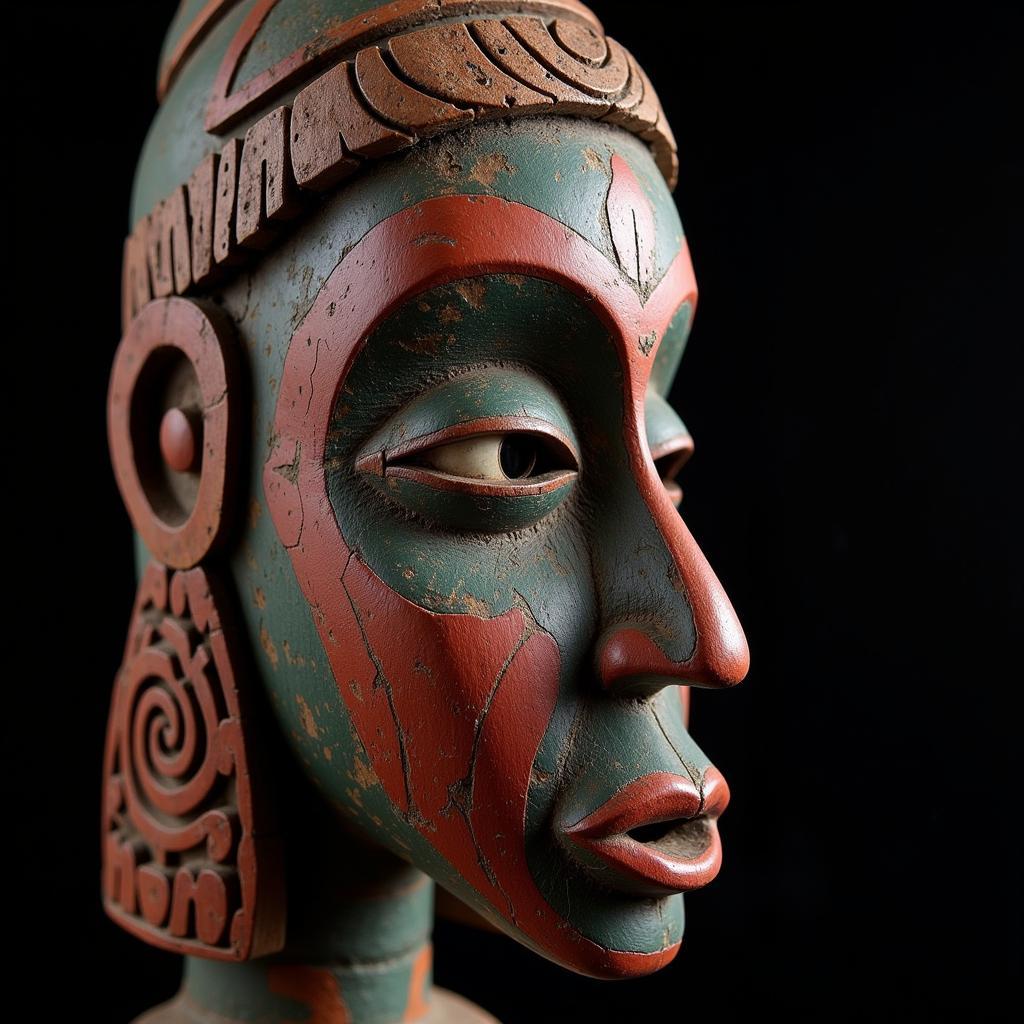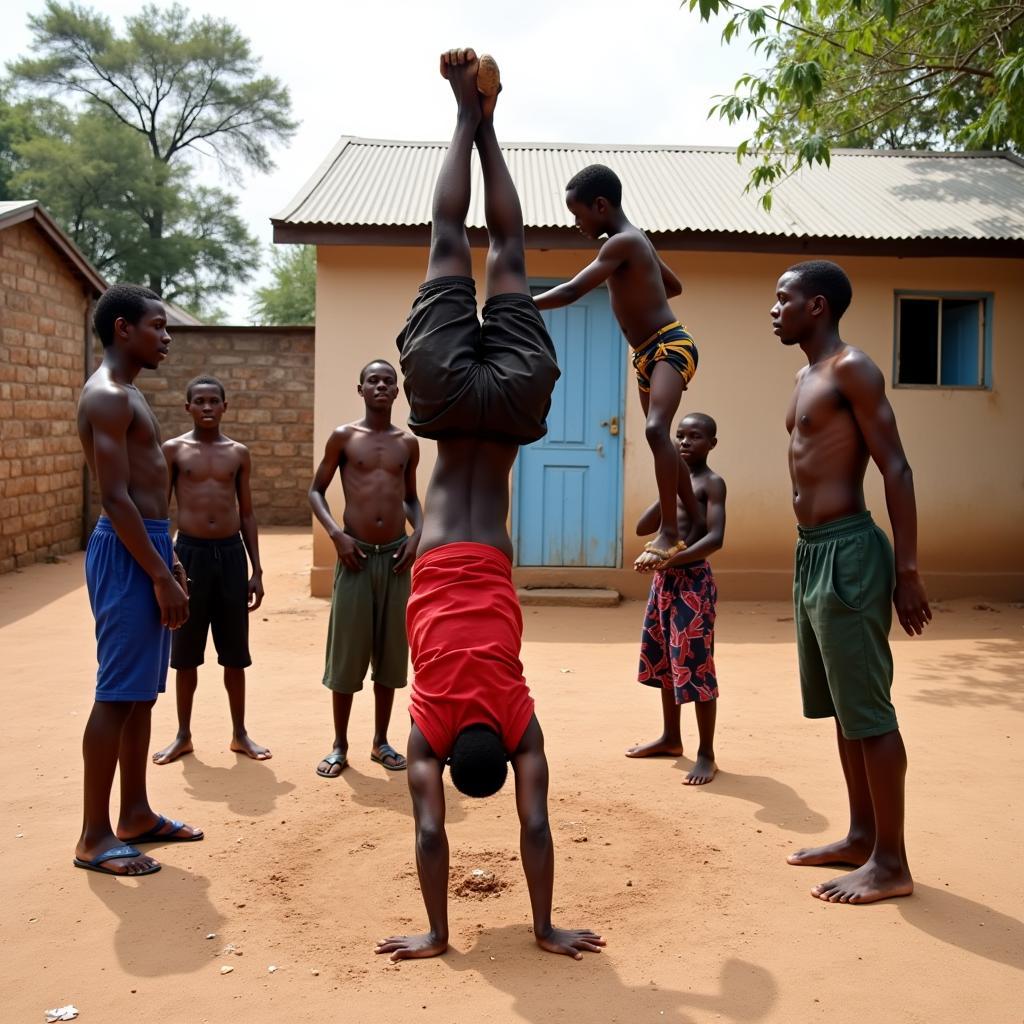Exploring the Vibrant World of African Art and Artists
African art represents a diverse and dynamic tapestry of artistic expression, encompassing a wide array of styles, mediums, and cultural influences. From the intricate carvings of West Africa to the colorful beadwork of the Maasai people, African art offers a captivating glimpse into the continent’s rich history, spirituality, and social values. This article delves into the fascinating world of African art and artists, exploring their unique perspectives, techniques, and contributions to the global art scene.
 African Mask Sculpture
African Mask Sculpture
A Legacy of Artistic Heritage
African art has a long and illustrious history, dating back thousands of years. Ancient rock paintings found in various parts of the continent, such as the Tassili n’Ajjer in Algeria and the Blombos Cave in South Africa, provide evidence of early artistic endeavors. Throughout the centuries, African artists have developed distinctive artistic traditions, often intertwined with religious beliefs, social customs, and ancestral veneration.
For instance, the Yoruba people of Nigeria are renowned for their exquisite bronze and terracotta sculptures, which often depict deities, ancestors, and rulers with remarkable realism and detail. Similarly, the Makonde people of Mozambique and Tanzania are known for their striking wooden masks and figures, characterized by their elongated forms and expressive features.
 Colorful African Textiles and Patterns
Colorful African Textiles and Patterns
Diverse Forms and Functions
African art encompasses a wide range of artistic expressions, each serving specific purposes within their cultural contexts. While some artworks are primarily aesthetic in nature, many hold significant religious or social functions. Masks, for example, are often used in rituals, ceremonies, and dances, embodying spirits, ancestors, or mythical beings. Sculptures may serve as representations of deities, guardians, or ancestral figures, while textiles and beadwork often denote social status, lineage, or group affiliation.
It’s also important to note the significant role of music and dance in African cultures. These art forms are not merely entertainment but serve as vital means of storytelling, communication, and social bonding. The rhythmic beats of the djembe drum, the melodic tunes of the kora, and the energetic movements of traditional dances all contribute to the richness and vibrancy of African artistic expression.
Contemporary African Art: A Global Presence
In recent decades, contemporary African art has gained increasing international recognition, with numerous artists achieving critical acclaim and exhibiting their work in prestigious galleries and museums worldwide. These artists draw inspiration from both traditional African aesthetics and contemporary global influences, creating innovative and thought-provoking works that challenge perceptions and push creative boundaries.
african animal artists often incorporate social commentary and political themes into their work, addressing issues such as identity, colonialism, globalization, and social justice. They experiment with a diverse range of mediums, including painting, sculpture, photography, installation, and digital art, constantly seeking new ways to express their unique perspectives and engage with audiences on a global scale.
Appreciating the Depth and Diversity
African art offers a captivating window into the soul of a continent. Its diverse forms, vibrant colors, and intricate details reflect the richness of African cultures and the creativity of its people. By exploring the works of African artists, we gain a deeper understanding of their unique perspectives, their connection to their heritage, and their contributions to the world of art.
Whether it’s the timeless beauty of traditional masks and sculptures or the innovative visions of contemporary artists, African art continues to inspire, challenge, and captivate audiences worldwide.
FAQ:
-
What are some common themes in African art?
Many African artworks explore themes related to spirituality, ancestry, community, and the relationship between humans and nature. -
What are some notable materials used in African art?
African artists utilize a wide range of materials, including wood, bronze, terracotta, textiles, beads, feathers, and natural pigments. -
Who are some influential contemporary African artists?
Some renowned contemporary African artists include El Anatsui, William Kentridge, Yinka Shonibare MBE, Julie Mehretu, and Wangechi Mutu, among many others. -
Where can I see examples of African art?
You can find collections of African art in museums worldwide, including The Metropolitan Museum of Art in New York, the British Museum in London, and the Musée du quai Branly – Jacques Chirac in Paris. -
How can I learn more about African art?
Numerous books, documentaries, and online resources are available that provide insights into the history, styles, and significance of African art.
Need Help Exploring African Art?
Contact us for personalized guidance and resources:
Phone: +255768904061
Email: kaka.mag@gmail.com
Address: Mbarali DC Mawindi, Kangaga, Tanzania
Our team is available 24/7 to assist you in discovering the captivating world of African art.
